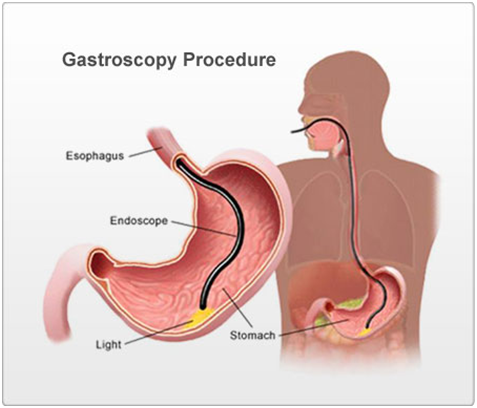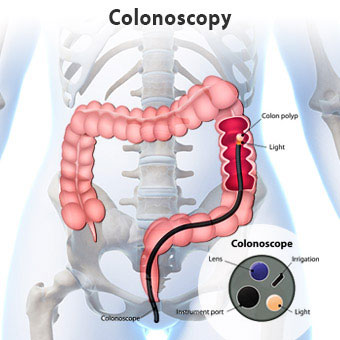Gastroscopy and colonoscopy
Gastroscopy and colonoscopy are procedures which enable doctors to examine the upper and lower gastrointestinal tract. A thin flexible tube with a tiny digital camera and light at one end is used to guide and a doctor carefully guides this instrument in various directions to look inside the gut. The picture from the camera appears on a monitor to provide a clear, magnified view of the lining of the gut.
During the procedures, patients receive a mild sedative and pain medication for comfort. A registered nurse assists the doctor during the procedure and an anaesthetist monitors vital signs.
Gastroscopy

Gastroscopy enables doctors to see inside the upper gastrointestinal (GI) tract – oesophagus, stomach and duodenum. This procedure is used to analyse swallowing difficulties, nausea, vomiting, reflux, bleeding, indigestion, and abdominal pain or chest pain, and for upper GI cancer screening, particularly in those with a family history of gastric or oesophageal cancer. Small tissue samples (biopsies) of the upper GI tract can be obtained for further analysis. The procedure can take 5 to 10 minutes.
Colonoscopy

A colonoscopy is a procedure that examines the colon (large bowel) and the tip of the small bowel called terminal ileum. Common indications for the procedure include rectal bleeding, change in bowel habits, diarrhoea, abdominal pain and family history of bowel cancer. The doctor can also take biopsies to look for early signs of cancer, infection, inflammation, and also remove colon polyps. Removed polyps are examined closely to determine if they are pre-cancerous. The procedure can take 15 to 20 minutes.
